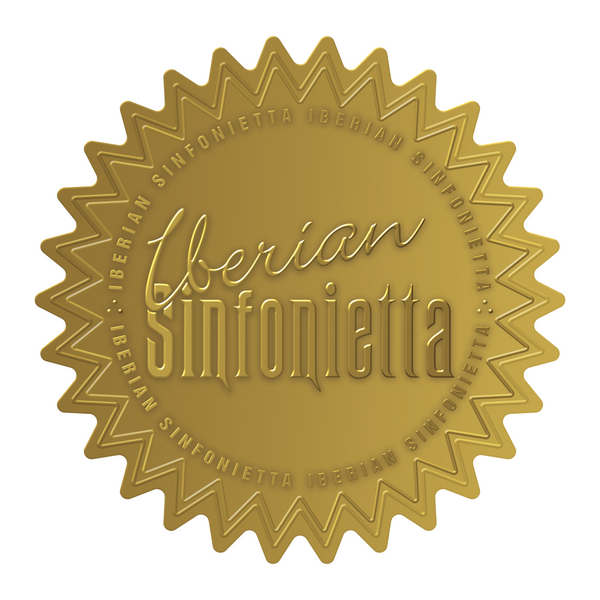
THE IDYL OF SIGFRIDO. WAGNER'S PROCLAMATION OF TRANSCENDENT LOVE
Dear public,
With the Idyll of Siegfried we finish the series of entries in this blog in relation to the Iberian Sinfonietta concert next Saturday, November 26 at 7:00 p.m. at the Peace Palace in Fuengirola.
As we have been reviewing, the Concert, titled Three Styles , presents us with an evening with works by Beethoven , Dvorak and Wagner , and it precisely begins with this one, which is what we end this series of entries with. Soon, we will continue with the January concert…
 |

|
The Idyll of Siegfried is the only symphonic work of Richard Wagner 's maturity. It was a birthday gift from Wagner to his wife Cosima, daughter of Liszt. It lasts approximately 20 minutes. It is a chamber composition (for small orchestra) completed at Villa Triebschen on December 4, 1870 celebrating the birth of his son Siegfried Wagner (1869) and his marriage to Cosima Liszt (1879). Wagner himself conducted the premiere of the work, which had been secretly rehearsed by Hans Richter, twenty-one days later for Cosima's birthday, who turned 33 years old that Christmas Day in 1870.

According to Cósima's diary: «I was awakened by the sound of new, wonderful and unknown music played by a chamber ensemble. At the end, Richard appeared with my five children and gave me the sheet music called Symphonic Birthday Gift.
Wagner had found, in that villa on the shores of Lake Lucerne, peace after the public scandal that almost ended his career, due to his relationship with Cosima, the illegitimate daughter of Franz Liszt married to the great director Hans von Bülow. Originally intended only for family and friends, he was forced to publish it in 1878 due to financial difficulties. Structurally, the Idyll of Siegfried is a kind of “collage” made up of different scenes from the Tetralogy The Ring of the Nibelung , especially from the second opera: Siegfried , although the main theme is the consequence of the “blickmotiv” or “motif of the gaze”, driving leitmotif of Tristan and Isolde.

There is, therefore, a very close link that unites Wagner's work, both strictly musically and psychologically. It was Wagner's crusade, the proclamation of Transcendent Love, and for this he resorted to post-Roman mythology, once again gaining a universal and timeless meaning. Therefore, the Idyll of Siegfried represents the synthesis of the Wagnerian ideal; It is Tristan and Isolde , Lohengrin , Tannhäuser , the “Ring”. The “Idyll” closes the cycle, Parsifal is the consequence of accessing Love; achieve Knowledge. And the path to achieve it goes inward; It is the reconciliation with the Soul-Isolde-Brunnhilde and her emancipation over the Mind-Morholt-Fafner. It is redemption through Love.
Georges Bizet (1838-1875) composed an opera titled Carmen , from which it can be deduced that Carmen's Habanera is a part of that opera. Correct. Georg Friedrich Händel (1685-1759) wrote an opera titled Xerxes , so it is logical to assume that the Largo of Xerxes is a part of this work. Very good. Pietro Mascagni (1863-1945), in turn, composed the opera Cavallería rusticana , which allows us to imagine that the Intermezzo of Cavallería rusticana belongs to the aforementioned work. Yes of course. And Richard Wagner composed an opera called Siegfried , so it must be assumed that the Idyll of Siegfried is a part of this opera. OK? Not in any way. This is an error that is often made from time to time regarding this score, one of Wagner 's very minor works and which, contrary to what one might think, has nothing to do with the opera Siegfried , at least not directly. It is a fact, however, that the stories related to both works are very interesting and very complicated, and do have to do, among other things, with the unedifying private life of Mr. Wagner .

The musical material for Siegfried's Idyll was worked by Wagner based on some themes from the opera Siegfried , whose composition he had begun in 1857, and which was premiered in Bayreuth in 1876 under the baton of Hans Richter. Furthermore, Wagner included in Siegfried's Idyll a quote from a very traditional German lullaby, which was probably used by Cosima to put little Siegfried to sleep. In contrast to the dense orchestration that Wagner proposed for his operas, the occasion and circumstances induced him to write the piece for a combination of woodwinds, horn, trumpet and strings. (On the morning of the premiere, the trumpet was provided by Richter). It is left to speculation to imagine that, Wagner being the kind of man he was, perhaps he was not capable of expressing love in real life with the same intensity and conviction with which he expressed it in the fantastic world of his heroes and heroines, valkyries and Nibelungen, a world that over the years would be inherited by his son Siegfried.
Not to miss it.
Jorge Rodríguez Morata
Pedagogical content coordinator
